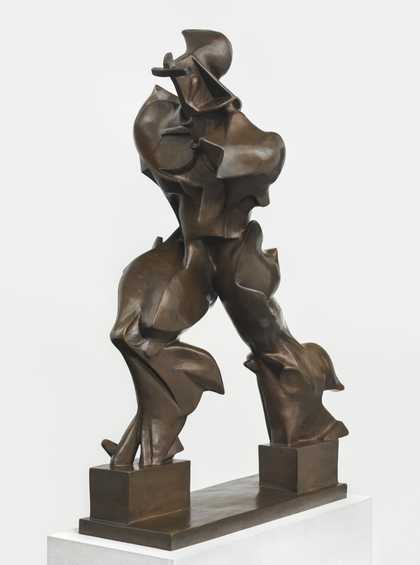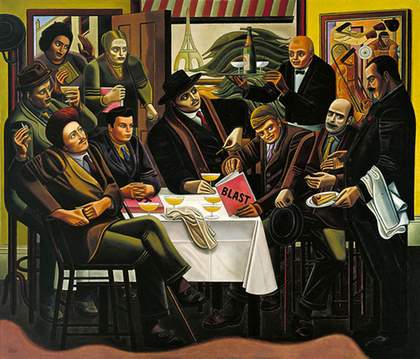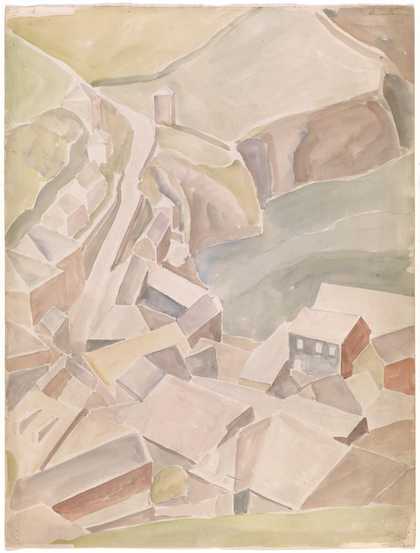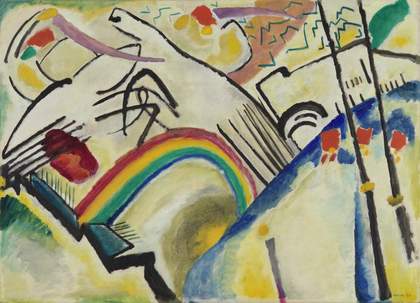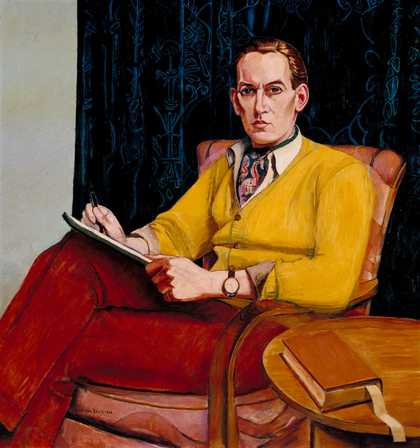The Vorticist movement had two female members, Helen Saunders and Jessica Dismorr, while Dorothy Shakespear was an unofficial member. Art historian Biddy Peppin, a relative of Helen Saunders, tells us the story of the female Vorticists.
My name is Bridget Peppin, and I’m an art historian and painter and also first cousin twice removed of the Vorticist painter Helen Saunders. Vorticism was an English art movement launched, unfortunately, in the summer of 1914, which is perhaps not the best moment to launch an art movement. What the Vorticists were trying to do was to go beyond Cubism and Futurism and create a new art that was completely responsive to the modern world of cities and machines.
This is one of Helen Saunders’ completely abstract works. It is entirely constructed of angles and straight lines. You have the repetition of shapes to a very great extent. You have triangles here. You have overlapping trapezoid shapes here. So this is something that is very typical of Vorticist work and I think makes it very different from either Cubist or Futurist work. Some of the Vorticists’ works are completely abstract, others have hints of perhaps buildings or perhaps figures.
This is one of only two paintings by Jessica Dismorr that has survived from the Vorticist period. It’s very different from Vorticist works by some of the other members of the group. It seems to represent space. You have these quasi-architectural forms floating around in an almost sort of gravity-less environment. So a very beautiful and very distinctive Vorticist work, which makes it all the more tragic that only one other Vorticist work by her still survives. It is thought that her executor may have destroyed some Vorticist works after her death in 1939 because he thought that they cast doubts on her sanity. Of course there was a general perception that women were somehow less able to be artists than men. Other art movements like Cubism and Futurism excluded women, but there were two women Vorticists who were sort of ‘fully paid-up’ members of the movement.
Dance, I think is the most exciting of all. It obviously shows one of the very new dances that were sweeping in from America using the jazz rhythms that were being developed in the United States. You can see these dancers breaking all the accepted rules of dance and they’re responding to the excitement of the syncopation of the jazz.
This drawing Vorticist composition is by Helen Saunders and dates from round about 1914 or 1915. There are quite a lot of possible interpretations of this work, but I think perhaps the figures below are the Vorticists and perhaps there is some kind of pendulum, and perhaps they are going to dislodge the sleeping figures of the establishment above.
This painting, which is hanging outside the Vorticist exhibition, was painted by William Roberts, one of the Vorticists, in 1961–62. So it’s not really a Vorticist work. It was painted to demonstrate that there was a group of Vorticists. The painting shows the two women Vorticists, Jessica Dismorr and Helen Saunders, who are arriving in time for dessert but not guests of the main meal.



